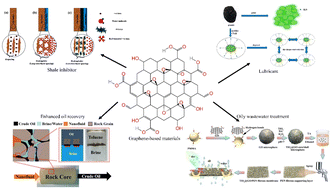Recent advances in the applications of graphene materials for the oil and gas industry
Abstract
Graphene is a material formed with carbon atoms connected by sp2 hybridization. It is extremely strong and very ductile, and is superhydrophobic and superlipophilic. It has important application prospects in materials science, micro and nano processing, energy, aerospace and biomedicine. Graphene also has some applications in the petroleum industry. As nanoscale materials, graphene-based materials can plug nano-pores and prevent water intrusion into clay minerals during the drilling process, they are suitable for sliding between layers and can be used as lubricants due to the two-dimensional structure. The adsorption properties of graphene-based materials allow them to improve the treatment rate when treating oily wastewater. This paper compiles recent advances in the application of graphene and its derivatives in oilfield extraction, including improving drilling fluid performance, enhanced oil recovery and oily wastewater treatment. We compare the performance advantages of graphene-based materials over other additives, and summarize the mechanism of action of graphene-based materials. The shortcomings of current research are identified and future research and improvement directions are envisaged.

- This article is part of the themed collection: 2023 Reviews in RSC Advances


 Please wait while we load your content...
Please wait while we load your content...